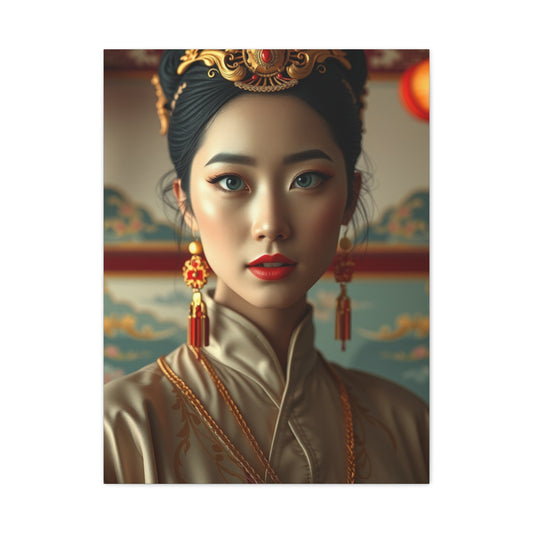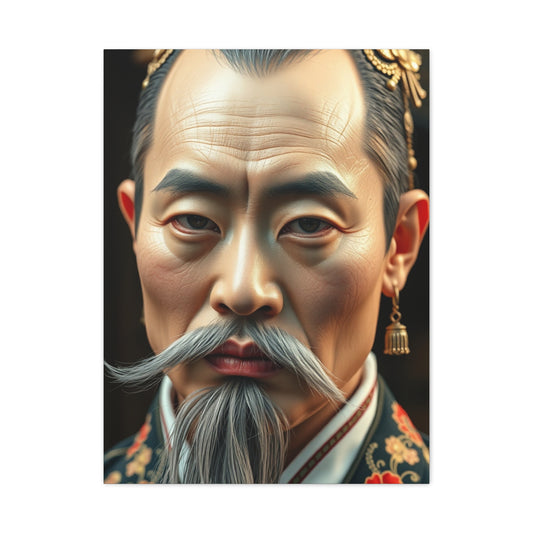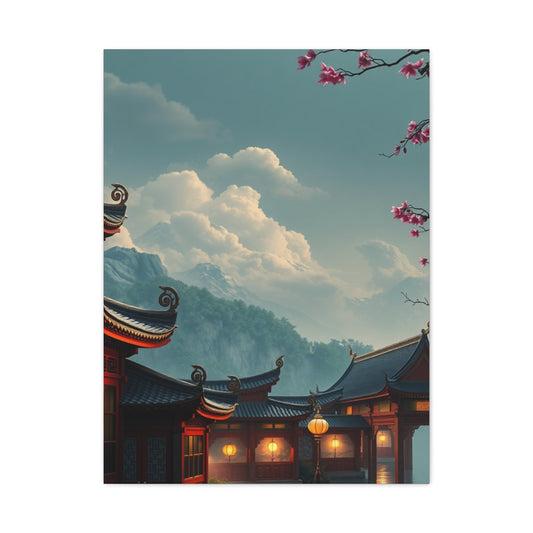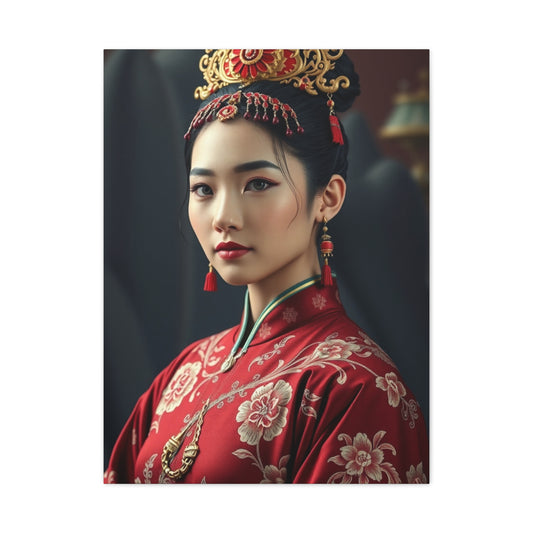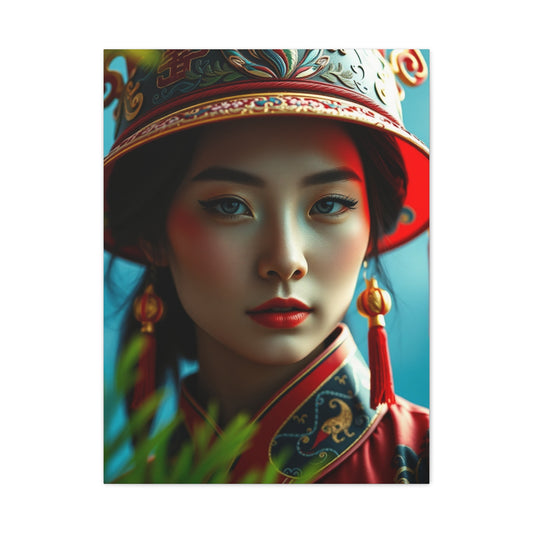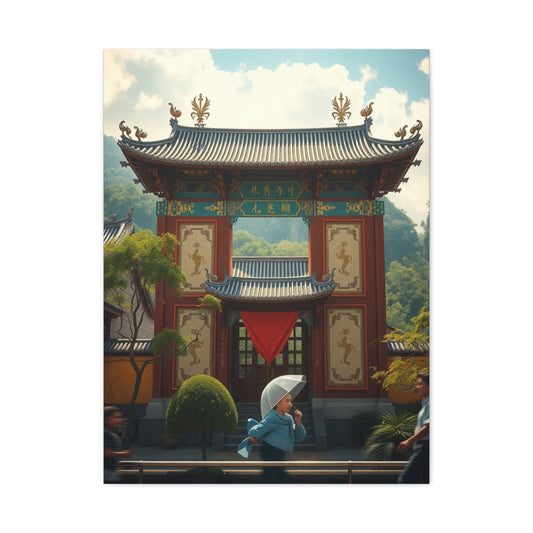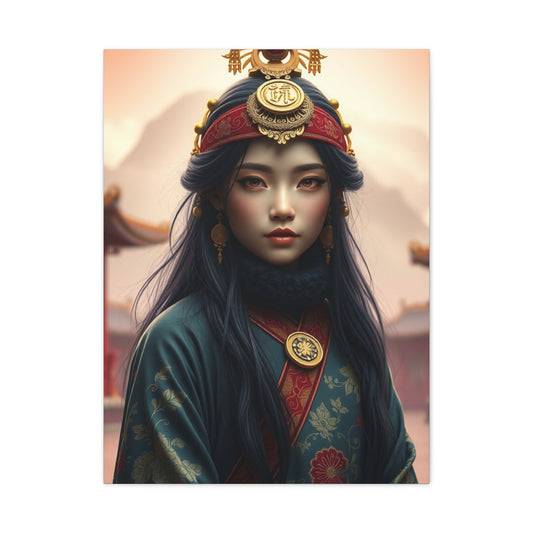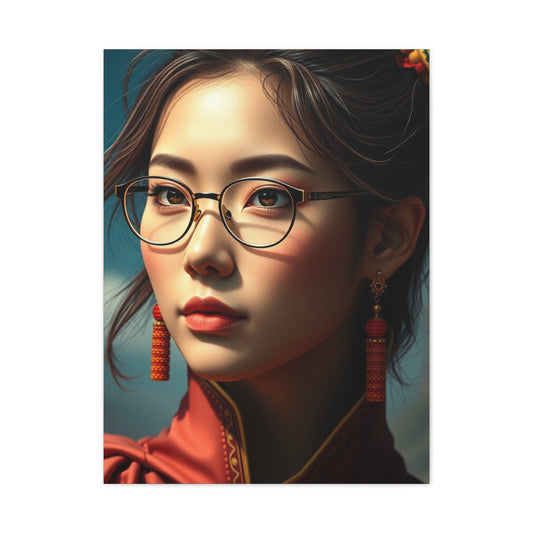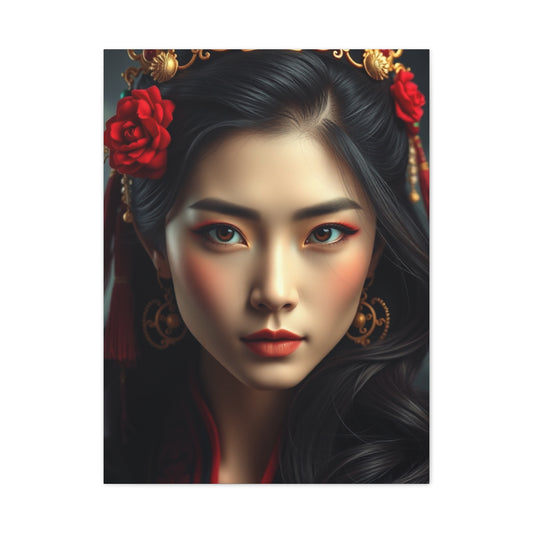Creating Stunning Pottery Barn Inspired Chinoiserie Wall Art
Few design styles carry the same enduring elegance and cultural richness as chinoiserie. Originating in 17th-century Europe, this decorative art form was inspired by Asian motifs, blending intricate patterns, delicate landscapes, and graceful imagery that continue to captivate interior enthusiasts today. Pottery Barn and other high-end retailers often feature chinoiserie wall art collections with breathtaking detail—but these pieces frequently come with steep price tags that place them beyond reach for many homeowners. Fortunately, with creativity and a few essential tools, it’s possible to create your own stunning Pottery Barn–inspired chinoiserie wall art at a fraction of the cost.
Chinoiserie designs are celebrated for their intricate storytelling. They often feature elements such as blooming cherry blossoms, exotic birds, tranquil pagodas, or flowing patterns inspired by traditional Asian craftsmanship. The harmonious balance of color and form brings a timeless sophistication to any living space, whether hung in a formal dining room, a serene bedroom retreat, or a modern living room seeking a touch of heritage. By creating your own versions of these iconic designs, you gain not only the satisfaction of crafting something personal but also the freedom to tailor every detail to your existing décor.
One of the greatest appeals of DIY chinoiserie art is the cost-effectiveness. Commercial pieces can easily cost hundreds—or even thousands—of dollars, depending on the size and level of detail. By contrast, a do-it-yourself project requires only a canvas or wooden panel, stencils or printed patterns, paints, and a steady hand. The affordability allows homeowners to experiment with large-scale statement pieces or even create an entire gallery wall without straining their budget. In this sense, DIY chinoiserie wall art delivers both creative expression and substantial financial savings.
The process itself is also deeply rewarding. Handcrafting chinoiserie designs encourages mindfulness and patience, much like the art practices from which it draws inspiration. Each brushstroke becomes part of a narrative that ties together personal creativity with centuries-old tradition. For beginners, stencils or decals provide a simple way to replicate the ornate patterns, while more experienced artists may enjoy freehand painting to add unique flourishes. Metallic accents, like touches of gold or silver, can further elevate the design, echoing the luxurious finishes found in high-end designer collections.
Equally important is the versatility of chinoiserie art in home styling. While it naturally pairs beautifully with traditional interiors, chinoiserie also adapts surprisingly well to contemporary spaces. For example, a set of minimalist navy-and-white chinoiserie panels can bring a sleek yet classic touch to a modern living room. In contrast, vibrant multicolor chinoiserie prints featuring birds and flowers can inject warmth and character into farmhouse-style or bohemian-inspired homes. This adaptability ensures that your handcrafted art will feel timeless rather than tied to passing trends.
When creating Pottery Barn–inspired chinoiserie wall art, customization is key. Unlike mass-produced pieces, your DIY project allows you to select color palettes that harmonize perfectly with your furnishings. A softer palette of muted blues and creams may suit a coastal-inspired room, while deeper greens and golds could add dramatic flair to a more formal space. You can also adjust the scale of the designs, opting for oversized blossoms and bold patterns for statement walls, or finer, more intricate motifs for subtle accents.
Beyond décor, chinoiserie wall art carries a sense of cultural storytelling and symbolism. Birds often symbolize freedom and harmony, while floral motifs can represent growth and renewal. By incorporating these elements into your designs, your artwork becomes not just a decoration, but a reflection of values and themes that resonate on a personal level. This deeper meaning enriches the space, allowing it to feel both beautiful and significant.
In essence, creating your own Pottery Barn–inspired chinoiserie wall art is about more than replicating a style—it’s about blending tradition, creativity, and individuality. With a modest investment of time and resources, you can craft elegant, museum-worthy pieces that elevate your home’s atmosphere while reflecting your personal taste. Rather than viewing chinoiserie as an inaccessible luxury, embrace it as a design approach you can master and make uniquely your own.
Understanding the Chinoiserie Aesthetic Movement
The Chinoiserie aesthetic represents one of the most fascinating cultural exchanges in the history of decorative arts. Emerging in Europe during the 17th and 18th centuries, this movement was fueled by fascination with the mysteries of the East, particularly China and broader Asian traditions. At its core, Chinoiserie captures a romanticized interpretation of Asian artistry, blending European craftsmanship with motifs, themes, and design philosophies inspired by Chinese and East Asian culture. What began as an exotic trend for aristocrats and collectors quickly evolved into a long-lasting artistic style that continues to influence modern interiors.
One of the defining features of Chinoiserie is its striking use of intricate motifs. The designs often include sweeping landscapes populated with delicate flowering branches, whimsical pagodas, and exotic birds painted with featherlike detail. Mythical creatures such as dragons and phoenixes also make appearances, symbolizing power, prosperity, and transformation. These images were typically rendered in vibrant, jewel-toned hues or soft, pastel washes, depending on the artistic medium. In furniture and ceramics, lacquer techniques and gilded accents further enhanced the richness of the visual presentation. To European eyes of the 18th century, such imagery suggested refinement, otherworldliness, and luxury, sparking a desire to incorporate these elements into everyday surroundings.
The enduring popularity of Chinoiserie lies not only in its beauty but also in its cultural resonance. For Europeans of the period, it symbolized sophistication, worldliness, and access to faraway lands. Imported porcelain, lacquered screens, and hand-painted wallpaper were prized possessions that demonstrated wealth and cultivated taste. Even today, the charm of Chinoiserie persists because it offers a sense of escapism—transporting viewers to imagined landscapes filled with tranquility, balance, and elegance.
Modern interpretations of Chinoiserie have evolved to suit contemporary lifestyles while retaining the essence of the original style. Instead of covering entire rooms with heavily detailed wall panels, many designers opt for statement pieces that highlight key elements. A single mural of flowering cherry blossoms or a wallpaper featuring stylized cranes can serve as a dramatic backdrop without overwhelming the room. Similarly, furniture with subtle Chinoiserie-inspired details—such as curved legs, lacquer finishes, or decorative inlays—brings a touch of history into modern interiors without clashing with sleek, contemporary aesthetics.
The versatility of Chinoiserie is another reason it remains relevant today. For homeowners who prefer a minimalist approach, pared-down versions of the style can introduce just enough ornamentation to soften the starkness of clean lines and monochrome palettes. A muted Chinoiserie print in neutral colors, for example, can create a sense of calm without compromising the modern character of the room. Conversely, those drawn to maximalist design find Chinoiserie especially appealing because its elaborate motifs and vibrant patterns lend themselves to bold, layered interiors rich with detail and personality.
Beyond aesthetics, Chinoiserie continues to resonate because it represents a cultural dialogue that is as relevant today as it was centuries ago. It reflects how artistic traditions can transcend geographical and temporal boundaries, evolving into something new while honoring their origins. In contemporary spaces, Chinoiserie allows homeowners to celebrate this cross-cultural fusion by blending historical elegance with modern sensibilities. Whether expressed through a feature wall, an antique-inspired piece of furniture, or subtle accents on textiles and ceramics, the style offers a pathway to connect past and present.
Ultimately, the Chinoiserie aesthetic is more than just decoration; it is a celebration of imagination, craftsmanship, and cultural exchange. Its motifs capture both the natural world and the mythical, inviting viewers into dreamlike landscapes where artistry and fantasy merge. In today’s design world, it serves as a reminder that beauty often lies in the interplay of differences—East and West, tradition and innovation, simplicity and complexity. For those seeking a timeless style that balances elegance with versatility, Chinoiserie remains an enchanting and enduring choice.
Discovering Inspiration Through Design Exploration
Creating chinoiserie-inspired art requires more than just creativity and an appreciation for this timeless decorative style—it also depends heavily on the selection of the right materials. The chinoiserie tradition, which emerged in Europe during the 17th and 18th centuries as an interpretation of East Asian aesthetics, is renowned for its intricate patterns, delicate details, and harmonious use of color. To achieve professional-quality results in any chinoiserie project, whether you’re designing wall art, refurbishing furniture, or crafting home décor pieces, careful attention to materials is paramount. Each component, from the frame to the paper, plays a vital role in bringing the elegance and sophistication of chinoiserie to life.
Every successful chinoiserie creation begins with an appropriate frame. The frame serves not just as a border but as a structural and aesthetic foundation that influences how the art is perceived. Wooden frames are particularly effective for chinoiserie, as their natural texture harmonizes with the organic motifs often featured in these designs. Simple profiles in wood, especially those finished in neutral tones such as ivory, beige, or soft grays, ensure that the artwork remains the focal point without distraction.
While ornate frames may seem appealing, they often clash with chinoiserie’s finely detailed birds, flowers, or pagodas, creating visual competition. The key is balance: a frame should complement the art, not overshadow it. In some cases, lightly painted or gilded finishes can enhance the piece, provided the embellishment is subtle and in tune with the artwork’s palette.
The heart of any chinoiserie project lies in its patterns and motifs, which makes paper selection crucial. High-quality scrapbook papers designed specifically for chinoiserie offer immense advantages. These specialty papers often feature authentic motifs such as cherry blossoms, exotic birds, latticework, and mythical creatures. Beyond their visual appeal, they also come in appropriate paper weights, which makes them easier to cut, fold, and manipulate without tearing.
Consistency in color palette is another essential factor. Traditional chinoiserie employs hues such as cobalt blue, jade green, gold, and deep red. Using papers that replicate these tones ensures a cohesive and authentic look. Moreover, investing in acid-free or archival-grade papers safeguards the longevity of the project by preventing yellowing or deterioration over time.
Even the most exquisite paper will fail to impress if not assembled with care. For this reason, basic yet high-quality crafting tools are indispensable. Precision scissors allow for clean, accurate cuts, particularly important when working with delicate motifs that require fine detailing. Archival adhesives provide strong bonds without staining or warping the paper. Reliable measuring tools, such as metal rulers or cutting mats, help ensure accuracy during layout and assembly.
A common mistake in DIY chinoiserie projects is underestimating the importance of these basic tools. Low-quality scissors may fray paper edges, while poor adhesives can lead to peeling over time. By investing in durable tools, crafters not only achieve cleaner results but also ensure the longevity of their creations.
Frames and supporting surfaces often need refinishing to align with the overall chinoiserie aesthetic. Spray paints formulated specifically for craft applications are ideal for this purpose. They provide smooth and even coverage, ensuring that frames or base surfaces do not distract from the intricacy of the artwork.
Water-based spray paints are especially practical, as they dry quickly and emit minimal odor, making them suitable for indoor projects. In addition to providing a uniform base, these paints also allow crafters to experiment with colors that enhance the chosen design—perhaps a matte black to create striking contrast, or a metallic gold to echo the opulence often associated with traditional chinoiserie.
Essential Materials for Chinoiserie Creation
Crafting chinoiserie-inspired art is not just about imagination—it’s also about precision, planning, and using the right materials to bring the intricate designs to life. The chinoiserie aesthetic, rooted in the European interpretation of East Asian art, is admired for its elegance, delicacy, and elaborate motifs. From blossoming trees and graceful birds to ornate pagodas and mythological figures, the visual richness of chinoiserie requires thoughtful execution. To achieve professional-quality results, one must begin with a careful selection of materials that balance beauty with practicality.
A chinoiserie project often starts with choosing the perfect frame, which serves as the foundation for the final piece. The frame does more than simply hold the artwork—it sets the mood and influences how viewers perceive the design. Wooden frames are particularly effective because of their warmth and ability to blend seamlessly with traditional oriental-inspired motifs. Frames with natural finishes or those painted in understated shades such as ivory, cream, soft gray, or muted black create a harmonious effect without drawing attention away from the central artwork.
Simplicity is usually the best approach. While decorative frames may appear appealing, overly ornate designs can compete with the intricate paper details, causing the piece to lose its balance and refinement. The aim of a chinoiserie frame is to enhance, not overpower. Subtle gilding or a softly distressed finish may sometimes work, but restraint ensures that the artwork remains the star of the display.
In chinoiserie art, paper is the canvas upon which the story unfolds. High-quality scrapbook papers, specifically created for this style, provide both authenticity and ease of use. These papers often feature repeating patterns inspired by traditional Chinese and East Asian art—delicate branches, exotic flowers, birds, dragons, and architectural motifs. Choosing papers with rich yet balanced color palettes helps create harmony within the design.
Classic chinoiserie colors include cobalt blue, jade green, crimson red, gold, and ivory. These shades evoke timeless sophistication and echo the traditional hand-painted works that inspired the movement. Equally important is the thickness of the paper. Specialty papers with the right weight are sturdy enough to handle cutting, layering, and gluing without tearing, yet flexible enough to manipulate during construction. Acid-free or archival-grade options are especially recommended, as they prevent discoloration and ensure that the project remains vibrant for years to come.
Even with the most beautiful papers, chinoiserie art cannot achieve its full potential without the right tools. Precision scissors are essential for cutting out detailed motifs, allowing for clean edges and smooth shapes. Archival adhesives are equally important, providing strong bonds that won’t damage or stain the paper. A reliable cutting mat and ruler ensure accuracy in measurements, helping create symmetrical layouts that add to the professional quality of the finished piece.
The choice of tools might seem secondary to the paper and frames, but in reality, they are the backbone of a successful project. Inferior scissors or adhesives can ruin delicate details, while poor measuring tools can cause uneven spacing and disrupt the overall balance. Investing in dependable, long-lasting tools pays off by producing superior craftsmanship and extending the life of the artwork.
Preparing Frames Through Refinishing Processes
The process of refinishing frames is a crucial stage in ensuring that any artistic or decorative project achieves a polished, professional, and long-lasting result. While many people focus primarily on the artwork or decorative element itself, the frame plays an equally important role in both aesthetic appeal and durability. A poorly prepared frame can undermine even the most beautiful design, while a properly refinished one can enhance colors, highlight details, and contribute to an overall cohesive presentation. Careful preparation, therefore, becomes the foundation of success.
Before any refinishing begins, the first and most essential step involves cleaning the frame thoroughly. Frames often accumulate a surprising amount of dirt, dust, oils from fingerprints, and even invisible residues left behind during manufacturing. These contaminants may appear harmless, but they can drastically affect paint adhesion and cause uneven textures or peeling finishes later on. Using a soft cloth, mild detergent, or specialized cleaning solutions helps remove these particles effectively. At this stage, it is also wise to carefully inspect the frame for imperfections such as cracks, chips, or dents, as addressing them early ensures smoother refinishing later.
Once the surface is clean, sanding becomes the next critical phase. Sanding helps remove remnants of old finishes and creates the necessary “tooth” for new paint or primer to grip onto. Glossy, sealed, or varnished surfaces in particular resist new coatings unless they are properly abraded. A light sanding with fine-grit sandpaper is often sufficient, although heavily coated frames may require more intensive sanding or even stripping to expose the base material. The goal here is not to remove every trace of the old finish but to establish a surface texture that promotes strong adhesion and prevents future flaking.
Priming is often underestimated but is one of the most powerful steps in frame refinishing. A high-quality primer does more than just prepare the surface—it creates a barrier that enhances durability, promotes smoothness, and ensures consistent color application. When transitioning from dark-colored frames to lighter shades, primer becomes indispensable, as it prevents bleed-through and discoloration. Moreover, primers can fill in small surface inconsistencies and make the topcoat appear more even and professional. Skipping primer may save time initially, but it often leads to disappointing results that require rework.
For many frame projects, spray painting proves to be the most efficient and visually appealing method. However, it requires precision and proper preparation. Ventilation is crucial; working in an open or well-ventilated space prevents inhalation of harmful fumes and ensures a cleaner environment. Protecting surrounding areas with drop cloths, newspapers, or plastic sheeting minimizes the risk of overspray settling on unintended surfaces.
The technique itself also matters. Holding the spray nozzle at a consistent distance—typically 6 to 12 inches from the surface—encourages even coverage and reduces the likelihood of drips or streaks. Moving the nozzle steadily across the frame rather than lingering in one spot helps maintain balance in the finish. These subtle details may seem small, but they significantly impact the professional quality of the final outcome.
Perhaps the most common mistake in frame refinishing is applying a single heavy coat in the hope of finishing quickly. In reality, multiple thin layers of paint or finish produce far superior results. Thin coats dry more evenly, reduce the risk of unsightly runs, and create a finish that is both smoother and more resilient. Each layer should be allowed ample time to dry completely before the next is applied. This patience not only ensures durability but also allows the true depth of color and sheen to emerge gradually.
Mastering Paper Selection and Preparation
Chinoiserie scrapbook papers encompass diverse design categories ranging from traditional florals to contemporary geometric interpretations. Understanding these variations helps identify options that align with specific project visions and room requirements.Traditional patterns typically feature organic motifs including blooming branches, exotic birds, and landscape elements rendered in classic blue and white color schemes. These designs work exceptionally well in formal settings and period-appropriate interiors.
Contemporary interpretations often simplify traditional elements while introducing modern color palettes and streamlined compositions. These variations suit current decorating trends while maintaining cultural authenticity.Paper quality considerations include weight, texture, and colorfastness properties that affect both appearance and durability. Heavier papers resist warping and tearing during handling, while fade-resistant inks maintain color integrity over time.
Pre-planning paper layouts maximizes material utilization and ensures consistent visual results across multiple pieces. Creating templates or patterns facilitates accurate cutting while minimizing waste.
Precision Cutting Methods for Professional Results
Achieving clean, accurate cuts requires appropriate tools and steady techniques that produce smooth edges without fraying or tearing. Sharp scissors specifically designed for paper cutting provide optimal results for most chinoiserie projects.Rotary cutters paired with metal rulers excel when creating straight lines or geometric shapes requiring absolute precision. These tools prove particularly valuable when preparing backing materials or creating uniform borders.Circle cutting presents unique challenges that benefit from specialized approaches.
Using household items as templates, such as plates or bowls, ensures consistent proportions across multiple pieces while maintaining perfectly round shapes.Marking paper surfaces lightly with pencil before cutting helps maintain accuracy while avoiding permanent marks on finished pieces. Erasing guidelines after cutting removes any visible traces that might detract from final appearances.Working on protected surfaces prevents damage to underlying furniture while providing stable cutting platforms. Self-healing cutting mats extend blade life while protecting work surfaces from repeated scoring.
Creating Backing Support Systems
Proper backing materials provide essential support for chinoiserie elements while ensuring long-term stability within frame assemblies. White cardstock offers excellent contrast for most chinoiserie designs while maintaining appropriate stiffness for mounting applications.Sizing backing materials accurately prevents gaps or overhang issues that compromise professional appearances. Measuring frame interior dimensions precisely ensures perfect fits without forcing materials into place.
Template creation streamlines the preparation of multiple backing pieces, particularly when creating series or collections. Cardboard templates withstand repeated tracing while maintaining dimensional accuracy throughout projects.Quality cardstock selection impacts both immediate results and long-term durability. Acid-free options prevent yellowing and deterioration that could affect artwork longevity.Surface preparation may require light scoring or folding when accommodating frame depth variations. These adjustments ensure flat mounting while preventing buckling or warping issues.
Advanced Adhesive Application Strategies
Selecting appropriate adhesives significantly influences both construction ease and finished durability. Hot glue guns provide immediate bonding for most chinoiserie applications while allowing repositioning during initial placement phases.Temperature control becomes crucial when working with heat-sensitive papers that might suffer damage from excessive temperatures. Low-temperature glue guns reduce risks while maintaining adequate bonding strength for lightweight applications.Adhesive placement patterns affect both holding power and visual results. Strategic application points maximize bonding while minimizing visible adhesive traces that might show through translucent papers.
Working time considerations require efficient processes that complete bonding before adhesives cool and lose tackiness. Pre-planning adhesive locations and maintaining organized workflows prevent rushing and potential mistakes.Alternative adhesive options include spray adhesives and double-sided tapes that offer different working characteristics. These alternatives may suit specific applications where heat sensitivity or repositioning requirements make hot glue inappropriate.
Assembly Sequence for Optimal Results
Logical assembly sequences prevent complications while ensuring professional-quality outcomes. Beginning with backing material preparation establishes foundations for subsequent layering processes.Positioning chinoiserie elements before permanent attachment allows adjustments and refinements that optimize visual balance. This preview stage identifies potential issues before irreversible bonding occurs.Working systematically through multiple pieces maintains consistency while building efficiency through repetition.
Establishing production rhythms minimizes errors while accelerating completion times.Quality control checkpoints throughout assembly processes catch issues early when corrections remain feasible. These inspections verify alignment, adhesion quality, and overall appearance standards.Final assembly steps include frame insertion and backing installation that secure completed artwork while protecting against dust and damage. Proper techniques ensure smooth installation without damaging delicate components.
Color Coordination and Palette Selection
Understanding color relationships within chinoiserie traditions helps create harmonious combinations that feel authentic while complementing existing decor schemes. Traditional palettes often emphasize blue and white combinations that evoke classic porcelain aesthetics.Contemporary interpretations expand beyond traditional limitations, incorporating wider color ranges while maintaining cultural authenticity. These variations allow greater flexibility when coordinating with modern interior color schemes.
Room lighting conditions significantly influence color appearance and should guide palette selections. Natural lighting reveals subtle color variations that artificial illumination might obscure or distort.Existing furnishing colors provide reference points for selecting complementary or contrasting chinoiserie palettes. Successful coordination creates visual flow while avoiding overwhelming color competition.Testing color combinations through small samples prevents costly mistakes while allowing experimentation with different options. Digital tools can simulate color relationships before committing to final selections.
Styling and Display Considerations
Strategic placement maximizes chinoiserie artwork's visual impact while ensuring appropriate scale relationships within room contexts. Wall space evaluation identifies optimal locations that provide adequate viewing distances and lighting conditions.Grouping multiple pieces requires careful attention to spacing, alignment, and visual weight distribution. Professional designers often recommend odd-numbered groupings that create dynamic visual interest.
Height placement affects both viewing comfort and overall room proportions. Standard hanging heights position artwork centers at approximately 57-60 inches from floor levels, though specific room characteristics may suggest adjustments.Lighting considerations enhance chinoiserie artwork's subtle details while preventing glare or reflection issues. Adjustable lighting systems allow optimization for different viewing times and conditions.Surrounding decor elements should complement rather than compete with chinoiserie pieces. Maintaining visual breathing room prevents cluttered appearances while highlighting artwork's distinctive characteristics.
Maintenance and Longevity Strategies
Proper care ensures chinoiserie artwork maintains its beauty and structural integrity over extended periods. Regular dusting with soft, dry cloths removes accumulated particles without damaging delicate surfaces.Environmental factors including humidity, temperature fluctuations, and direct sunlight exposure can affect paper-based artwork longevity. Strategic placement away from heating vents and windows minimizes these risks.Frame maintenance includes periodic hardware inspections and adjustments that prevent loosening or failure. Tightening hanging hardware and checking glass security prevents accidents while extending service life.
Storage considerations become important when rotating seasonal displays or temporarily relocating artwork. Proper wrapping and flat storage prevent damage during inactive periods.Professional conservation services may become necessary for valuable or sentimental pieces experiencing age-related deterioration. Early intervention often prevents more extensive damage while preserving original characteristics.
Customization and Personalization Options
Individual preferences and specific room requirements often suggest modifications to basic chinoiserie concepts. Personal touches transform generic projects into unique expressions that reflect individual tastes.Color customization allows coordination with existing decor while maintaining chinoiserie authenticity. Paint mixing and tinting techniques expand available options beyond commercial offerings.
Size variations accommodate different wall spaces and viewing distances. Scaling designs appropriately ensures visual balance while maintaining proportional relationships.Mixed media approaches incorporate additional elements such as metallic accents, textural components, or dimensional features that enhance basic paper designs.Themed variations might emphasize specific motifs such as botanical elements, architectural features, or animal subjects that align with personal interests or room functions.
Budget-Conscious Sourcing Strategies
Smart shopping approaches significantly reduce project costs while maintaining quality standards. Bulk purchasing of basic materials spreads costs across multiple projects while ensuring supply consistency.Seasonal sales and clearance events provide opportunities for substantial savings on frames, papers, and finishing supplies. Building material stockpiles during promotional periods supports future projects.
Alternative source exploration might reveal unexpected options at thrift stores, garage sales, or online marketplaces. Creative repurposing of existing items reduces costs while adding unique character.DIY approaches for frame refinishing eliminate professional refinishing costs while providing complete creative control over final appearances. Basic techniques yield professional results with modest investments.
Sharing projects with friends or family members allows bulk material purchases and collaborative working sessions that reduce individual costs while building relationships.
Environmental Impact and Sustainability
Eco-conscious crafting approaches minimize environmental impacts while creating beautiful chinoiserie artwork. Selecting sustainable materials and processes aligns creative activities with environmental responsibility.Repurposing existing frames and materials reduces waste while adding unique character to finished pieces. Creative reuse prevents items from entering waste streams while supporting budget goals.
Low-VOC paints and adhesives minimize indoor air quality impacts while providing necessary performance characteristics. Many modern formulations offer improved environmental profiles without compromising results.Local sourcing reduces transportation impacts while supporting community businesses. Regional suppliers often provide personalized service and specialized knowledge that enhances project success.End-of-life considerations include recyclability and disposal options for materials that eventually require replacement. Planning for eventual disposal supports comprehensive environmental stewardship.
Troubleshooting Common Issues
Understanding potential problems and their solutions prevents frustration while ensuring successful project completion. Common issues include adhesion failures, color bleeding, and dimensional inaccuracies.Adhesion problems often result from inadequate surface preparation or inappropriate adhesive selection. Cleaning surfaces thoroughly and selecting suitable bonding agents prevent most adhesion failures.Color bleeding occurs when moisture or heat causes ink migration beyond intended boundaries.
Using high-quality papers and appropriate handling techniques minimizes these risks.Dimensional issues typically stem from measurement errors or template inaccuracies. Double-checking measurements and using reliable templates prevent most sizing problems.Paper tearing during cutting usually indicates dull blades or inappropriate cutting techniques. Maintaining sharp tools and using proper cutting methods prevent damage while ensuring clean edges.Warping and buckling often result from moisture exposure or inadequate backing support. Controlling environmental conditions and using appropriate backing materials prevent these structural issues.
Advanced Design Variations
Sophisticated approaches expand beyond basic circular motifs to incorporate complex compositions and layered elements. These variations require additional skills but produce stunning results that rival professional artwork.Layered compositions combine multiple paper elements to create depth and visual interest. Strategic layering creates dimensional effects while maintaining overall cohesion.
Mixed pattern approaches blend different chinoiserie motifs within single compositions. Successful integration requires careful attention to scale relationships and color coordination.
Texture incorporation adds tactile interest through embossed papers, fabric elements, or dimensional accessories. These additions create sophisticated results that engage multiple senses.Asymmetrical compositions challenge traditional symmetry while creating dynamic visual energy. These approaches require confident design skills but produce distinctive contemporary results.
Creating Series and Collections
Developing multiple related pieces creates cohesive displays that make stronger visual statements than individual artworks. Series development requires planning that ensures unity while avoiding monotony.Theme development provides organizing principles that guide individual piece creation while maintaining overall coherence. Successful themes balance repetition with variation.Scale progression within series creates visual rhythm and hierarchy that guides viewer attention.
Varying sizes prevent uniform appearances while maintaining proportional relationships.Color evolution across series pieces creates subtle transitions that unify collections while providing individual character. Gradual color shifts maintain coherence while adding visual interest.Display planning for series requires consideration of spacing, lighting, and viewing angles that optimize collective impact. Strategic arrangements enhance individual pieces while strengthening overall presentations.
Professional Finishing Techniques
Attention to finishing details distinguishes amateur efforts from professional-quality results. These techniques require minimal additional effort but significantly enhance final appearances.Edge finishing prevents fraying while creating clean, professional appearances. Various techniques address different paper types and aesthetic preferences.Surface protection through appropriate sealers extends longevity while maintaining color integrity. Understanding sealer properties ensures compatibility with paper substrates.Hardware selection affects both functionality and appearance.
Quality hanging systems ensure secure mounting while contributing to overall aesthetic success.Final inspection processes identify issues requiring correction before installation. Systematic quality control prevents disappointment while ensuring satisfaction.Documentation of successful techniques supports future projects while building personal crafting knowledge. Recording material sources, color formulations, and process modifications creates valuable reference resources.
Seasonal and Holiday Adaptations
Adapting chinoiserie concepts for seasonal displays adds versatility while maximizing investment returns. Strategic modifications create appropriate seasonal connections without compromising cultural authenticity.Spring interpretations might emphasize flowering branches and renewal themes that align with seasonal preferences. Cherry blossoms and other traditional spring motifs provide natural connections.Summer adaptations could incorporate lighter color palettes and airy compositions that reflect seasonal moods. Bamboo elements and water features offer cooling visual associations.
Autumn versions might feature harvest themes and warmer color palettes that complement fall decorating schemes. Traditional autumn motifs blend seamlessly with chinoiserie aesthetics.Winter interpretations could emphasize architectural elements and cooler color schemes that suit cold-weather interiors. Snow-covered landscapes and winter birds provide seasonal connections.Holiday adaptations require subtle approaches that maintain cultural respect while acknowledging celebratory themes. Successful integration avoids obvious commercial holiday elements while creating festive connections.
Incorporating Modern Elements
Contemporary design sensibilities sometimes suggest modifications that update traditional chinoiserie for modern interiors. Successful modernization maintains cultural authenticity while addressing current aesthetic preferences.Geometric simplification reduces complex traditional motifs to essential elements that suit minimalist preferences. These reductions maintain recognizable characteristics while eliminating excessive detail.Color modernization might substitute contemporary palettes for traditional combinations while preserving compositional relationships. Updated colors coordinate with modern furnishing schemes.
Scale adjustments accommodate contemporary room proportions and furniture relationships. Larger formats suit modern spaces while maintaining appropriate detail visibility.Material integration might incorporate modern substrates or finishing techniques that enhance durability while preserving traditional appearances.Digital integration allows hybrid approaches that combine traditional handcraft with modern precision. Computer-aided design tools support complex layouts while maintaining handmade character.
Teaching and Sharing Techniques
Successful chinoiserie projects often inspire desires to share knowledge with family members and friends. Developing teaching approaches helps others achieve similar success while building community connections.Skill assessment helps identify appropriate starting projects for different experience levels. Beginning crafters benefit from simplified approaches that build confidence through early success.
Material preparation for group projects requires advance planning that ensures adequate supplies while controlling costs. Bulk purchasing supports group activities while maintaining individual ownership.
Instruction sequencing presents techniques in logical progression that builds skills systematically. Clear explanations prevent confusion while encouraging independent development.Safety considerations become particularly important when teaching children or inexperienced adults. Proper tool handling and workspace organization prevent accidents while promoting good habits.Documentation of teaching experiences improves future instruction while building personal satisfaction through shared success.
Cultural Appreciation and Sensitivity
Creating chinoiserie artwork requires respectful appreciation for cultural origins while avoiding appropriation concerns. Understanding historical contexts enhances appreciation while guiding appropriate modern interpretations.Traditional meanings behind common motifs provide insight into symbolic significance beyond aesthetic appeal. This knowledge deepens appreciation while informing respectful usage.
Contemporary perspectives on cultural borrowing suggest approaches that honor origins while creating personal expressions. Respectful adaptation avoids stereotypical representations while celebrating cultural beauty.Educational opportunities arise through chinoiserie projects that introduce cultural history and artistic traditions. Learning experiences enhance crafting while building cultural awareness.Community connections might develop through cultural organizations or educational institutions interested in traditional arts. These relationships provide learning opportunities while building cultural bridges.
Conclusion
Creating stunning chinoiserie wall art represents an accessible entry point into sophisticated home decorating that combines cultural appreciation with personal creativity. Through careful planning, quality material selection, and attention to detail, crafters can achieve professional-quality results that rival expensive commercial alternatives while maintaining complete creative control over final outcomes.The journey from initial inspiration to finished artwork provides opportunities for skill development, cultural learning, and personal expression that extend far beyond simple decoration.
Each project builds technical capabilities while deepening appreciation for traditional artistic traditions that continue to influence contemporary design preferences.Budget-conscious approaches demonstrate that elegant home decoration remains accessible regardless of financial constraints. Strategic material sourcing, efficient working methods, and creative problem-solving yield impressive results that prove expensive commercial options unnecessary for achieving sophisticated aesthetic goals.
The versatility inherent in chinoiserie concepts ensures continued relevance across changing decorating trends and personal preferences. Basic techniques adapt readily to seasonal variations, color scheme changes, and evolving room requirements while maintaining fundamental aesthetic appeal.
Environmental consciousness adds another dimension to chinoiserie crafting through sustainable material choices, repurposing opportunities, and longevity-focused approaches that minimize waste while maximizing enjoyment. These considerations align creative activities with broader responsibility while enhancing personal satisfaction.Sharing successful techniques with family members and friends multiplies project benefits while building community connections through common interests. Teaching experiences reinforce personal learning while creating opportunities for collaborative creativity and relationship building.
The cultural dimensions of chinoiserie appreciation provide educational opportunities that extend crafting benefits into broader cultural awareness and sensitivity. Understanding traditional meanings and historical contexts enriches creative processes while promoting respectful cultural engagement.Future projects benefit from documented experiences and refined techniques that improve efficiency while expanding creative possibilities. Building personal expertise through successive projects creates foundations for increasingly ambitious undertakings that continue challenging skills while providing ongoing satisfaction.
The integration of traditional aesthetics with contemporary living situations demonstrates the timeless appeal of well-executed chinoiserie interpretations. These projects create lasting beauty that enhances daily living while preserving cultural traditions through respectful modern application.Successful chinoiserie wall art creation ultimately represents a synthesis of cultural appreciation, creative expression, practical skills, and personal satisfaction that transforms ordinary living spaces into sophisticated environments reflecting individual taste and cultural awareness.

